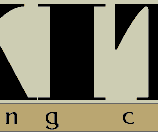 Save this page (95.5 kb)
Save this page (95.5 kb)
Nihonken Taikan (A Manual of The Japanese Dog ), pp. 11-13, 1953
(Reissued 1987), Seibundo Shinkosha, Tokyo, Japan
THE PRESERVATION AND DEVELOPMENT OF JAPANESE DOGS
By Dr. Shiro Itagaki
A book of famous dogs published around 1897 shows many ideal Japanese dogs. During my childhood, large red Japanese dogs with erect ears were raised by almost every household in certain regions in my home prefecture of Yamagata. However, in the mid 1920s, except for those pure Japanese dogs that were living in the deep mountainous areas, almost all of the Japanese dogs were crossbred with dogs of foreign origin, and Japanese dogs with the ancient characteristic features faced extinction Because of this possibility, we established the Nippon Inu Hozonkai (Nippo, NIH, Nichiho, Nipponken Hozonkai) as a dog organization for the preservation and improvement of the disappearing Japanese dogs through archeology and other research methods The Japanese dog standard was written and Japanese dog shows were held in Tokyo, to attain this goal, Japanese dogs then became popular nation wide. Within a few years, many Japanese dogs of excellent quality purchased from hunters and farmers from the mountainous areas were I used to produce large numbers of dogs. We were quite pleased.
We did research into ourancestry and some of thefactors that caused the rapid deterioration of our herished Japanese dogs within a period of only thirty years from the Meiji Period (1868-1912).
My views on Japanese dogs are presented below.
The Popularity of Foreign Dogs
The coming of the western culture almost destroyed many of our established customs. This was true also of our dogs. Foreign dogs were admired for their good qualities, while almost no attention was given to Japanese dogs. Japanese dogs were called regional dogs or ignored as mere strays. Their puppies were often abandoned in the open fields or washed down the river. Japanese dog breeders were also regarded as being behind the times. A gradual decline in bloodlines of many fine Japanese's dogs led some to finally come to the realization of the necessity of preserving andrestoring these Japanese dogs.
However, literary dog writers of this period had their faults. Foreign books were translated without any comprehension of dogs or with any goals in mind. Rehashings of foreign books under titles as Dog Breeds or How to Raise a Dog were published. Characteristics of true Japanese dogs were rarely mentioned, since their knowledge on this subject was almost nil.
They referred to the Japanese Spaniel and the Tosa fighting dog as Japanese dogs. They also praised foreign dogs they had never seen.
Deep research into foreign dogs were done, and tales of their heroisms and legends were believed to be limited only to these foreign dogs. Stories of loyalties and guarding of their master's life by Japanese dog were forgotten.
Random Breeding
Years of consistent breeding are required to improve or standardize a dog breed. Much effort and time are spent by advanced nations to improve domesticated horses, cows, or to produce a new dog breed. Japan had very little communication with the rest of the world before 1868. Therefore, natural breeding occurred among Japanese dogs in local neighborhoods for several thousand years, resulting in pure Japanese dogs that were standardized within a given area. However, increased association with foreign dogs resulted in crossbreeding nationwide, except for dogs that lived in relatively remote mountain areas.
Popularity of The Fighting Dog
The popularity and improvement of fighting dogs may have caused almost total eradication of Japanese dogs. The Tosa fighting dog, generally called the Tosa dog, was regarded as a Japanese dog by many at that time. It is more appropriate to call it the Tosa fighting dog, in order to distinguish it from the Japanese dog in the Tosa area ( ancient name for the Kochi area in Shikoku ) for one to have a misconception of the true Japanese dog. A fighting dog must be massive, powerful with endurance and nimbleness. Since the Japanese dogs lacked some of these qualities, bloodlines of the Mastiff, Bulldog, Great Dane and others were introduced, resulting in a type of working dog not seen previously in Japan. There was no dog standard.
The emphasis was on strength. This resulted in the production of some dogs with deformities that may have greatly affected the large and medium Japanese dogs.
Motives That Led to The Establishment of Nippo
The foregoing conditions occurred in the Japanese dog world around 1912 to 1926. A few of us, who were greatly concerned, gathered to establish the Nippon Inu Hozonkai ( Nippo, NIH, Nichiho, Nipponken Hozonkai ) in 1928, to preserve and improve toward the pure Japanese dog and prevent its extinction.
The next important step was the establishment of the Japanese dog standard. Any dog organization needs an ideal dog standard for breeders to improve their dogs toward that standard. When the Nippon Inu Hozonkai was established, the important question raised was the standard. Any errors in the original standard will jeopardize the future of the Japanese dog.
Therefore, in establishing the Japanese dog standard, it was very important to make correct classifications. Such a difficult problem was met by investigating the distribution of Japanese dogs in various areas, and studying as many dogs possible beforehand. Dogs from other areas such as Karafuto (Sakhalin), the "Kuriles," Taiwan, Ryukyu Islands, Korea, Kamchatka, Siberia, Manchuria, Mongolia, the Chinese Mainland, Southern Asia, the Philippines and others were studied to help properly classify Japanese dogs. However, numerous problems and unforeseen expenses were encountered. Fortunately, we were able to use many data and photographs of Japanese hunting dogs from the deep mountainous areas due to cooperative sources.
We decided to classify the Japanese dogs into the large, medium and small, and established a standard for each class. However, we were unable to make a clear distinction between boundaries of the large and medium, the medium and small classes. Also, within the medium class were the large and small class types so that difficulties were encountered at times in determining character and other features were compared and classified. Fortunately, a great majority approved the standard, and I believe that it would not be modified today or in the future.
My Opinion of The Three Dog Classifications
I would like to express my opinion of the three dog classifications and present a short discussion of the future.
Small dogs were widely distributed in the mountain regions of central Honshu, namely in the prefectures of Gifu, Nagano, Toyama, Yamanashi, Fukui, Gunma, Saitama, Niigata, and Fukushima, the Chugoku area, and the area bordering the Sanyo and Sanin areas, and the Shikoku area. The small dog is generally called the Shiba dog (brushwood dog), while others have used the characters referring to a grass dog. The name, Shiba dog (brushwood dog), has a more familiar feeling, and we prefer to use this name from now on. Based on their places of origin, they are also called Shinshu-Shiba, Echigo-Shiba, Mino-Shiba and Sekishu-Shiba. Among the various coat colors, reddish brown is most common. However, red, brindle and Kai brindle coats are also seen.
The small dog is widely distributed. Almost all of the Japanese dogs in ancient times were probably of the small type, since most of the skeletons excavated from ancient tombs and shell mounds are of small dogs, whether they be work dogs or pets. Perhaps small Japanese dogs were more suitable and preferred at that time.
Medium dogs were called boar dogs or deer dogs, and used mainly for boar and deer hunting in Kishu, Hida, Tohoku, Chichibu and Shikoku. Fierce dogs used by the Ainu people for bear hunting also belonged to this medium class. Coat colors included white, black, sesame and red.
However, it seems that white Kishu dogs were more common. Many years ago, when I was a judge at a Japanese dog show in the city of Shingu in Kishu (Wakayama Prefecture), I can clearly recall to this day, of seeing in a evening haze, a white boar dog being led on a leash by a hunter along the banks of the Kumano River that flows between some rugged mountain peaks.
The Akita dog from Odate is an example of the large dog. The most famous Akita dog is Hachiko, whose gallant figure is shown as a bronze statue at the public square in front of the Shibuya Station in Tokyo, and his mounted remains are preserved in the National Science Museum. Coat colors include red, sesame, black and white. However, I clearly recall, as a child of seeing red coats in the majority of large dogs. Large dogs are used preferably as guard or show dogs instead of as hunting dogs.
Although Japanese dogs have not yet been completely improved as a dog breed, within their unrefined features is an indescribable charm and intelligence. Its original intelligence as a hunting dog makes it a suitable family dog. Another feature is their admirable unique proud spirit and vigor Japanese dog owners claim that the senses of smell, hearing and vision of the Japanese dogs are no less than those of other dog breeds. The Kishu dog's keen sense of smell enables them to remarkably track down the wild boar. Their hearing senses are also said to be keen.
The Type of Dog Preferred by The Public
Twenty years have passed since the founding of Nippo, and I believe that it is very important to continue our investigation of the types of Japanese dog preferred by the public.
More than half of the dogs shown during the establishment of Nippo were medium dogs, of which many were excellent. According to the established rules at that time, judging was classified by age and gender. The Ministry of Education and the Nippo Awards were awarded almost entirely to medium type dogs. Many small dogs were also shown, and one can become aware of the wide distribution of these small ancient Japanese dogs. I have not been very involved with dogs recently, due to my health. However, after attending two or three dog shows this year, I have noticed the large number of large dogs, and the overall winners were almost all from the large dog group that were awarded the Ministry of Education and the Nippo Awards.
Medium dogs have became fewer. Furthermore, the poor quality of the medium dogs seen recently is a change undreamed of a few years ago. I often wonder of what significance are these changes.
(The author is a professor of veterinary medicine)
Translated 3/17/91
Edited 2/13/1997
Translator's comments: Additions by the translator are in italics.




